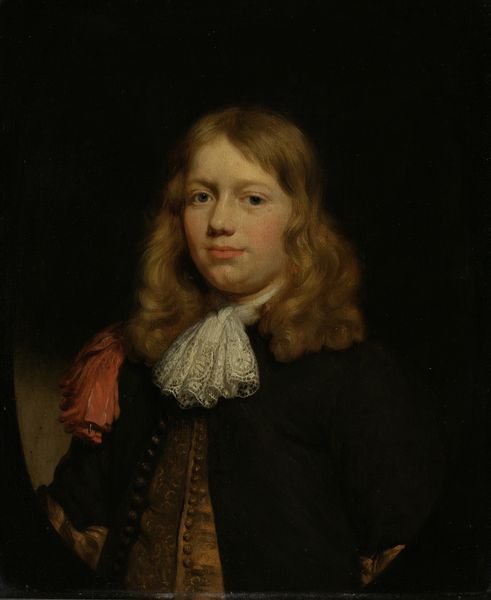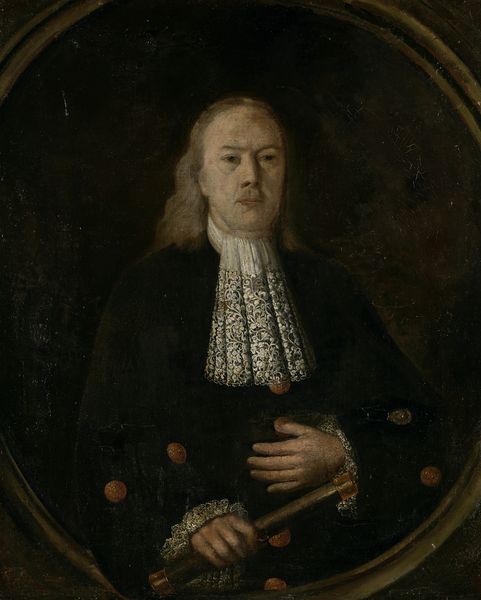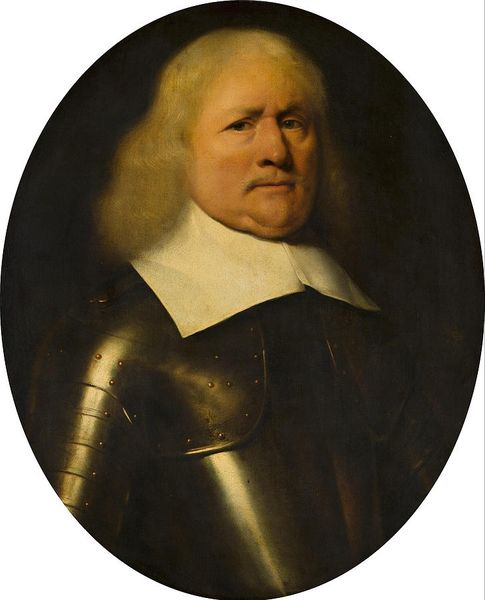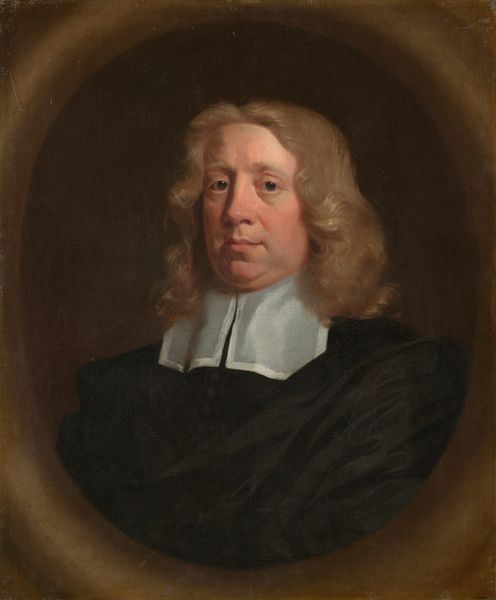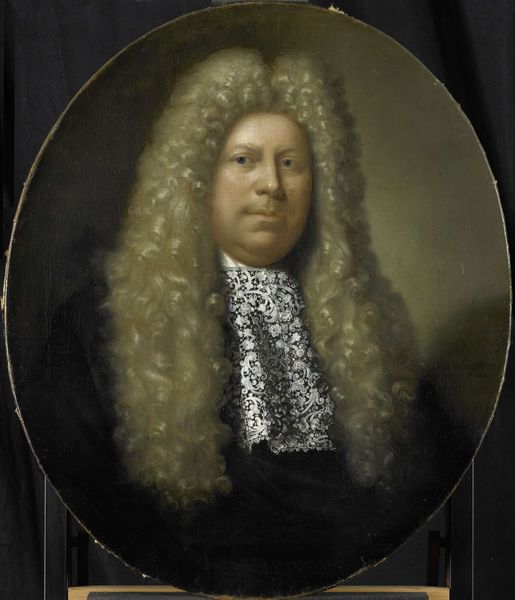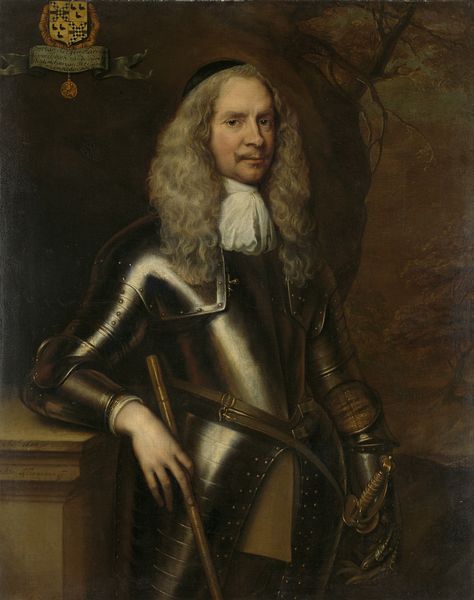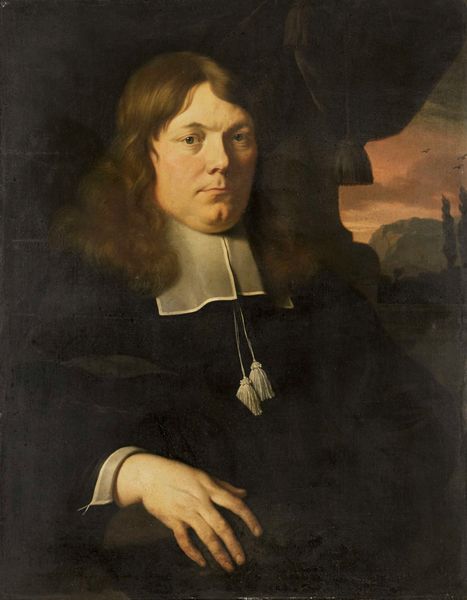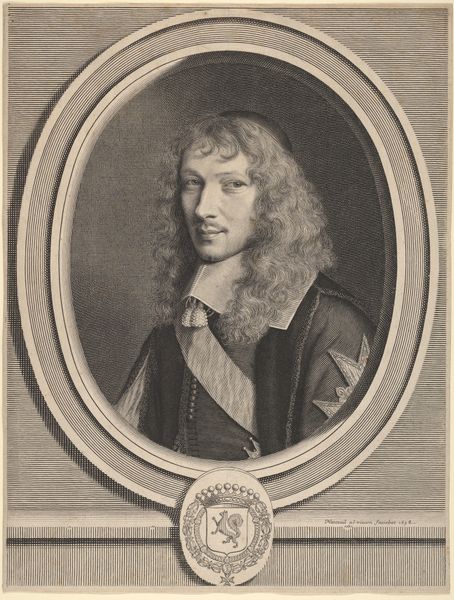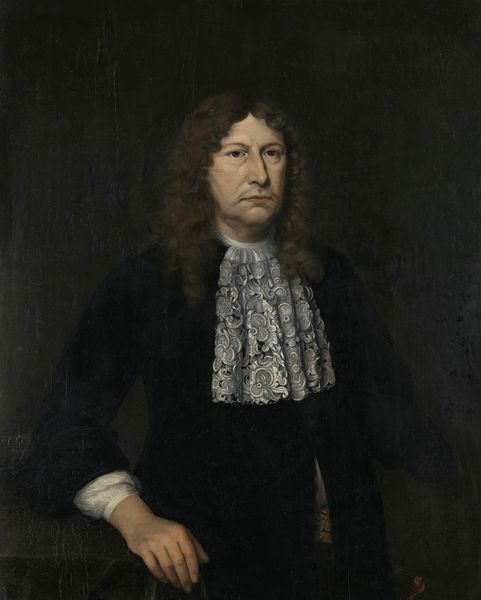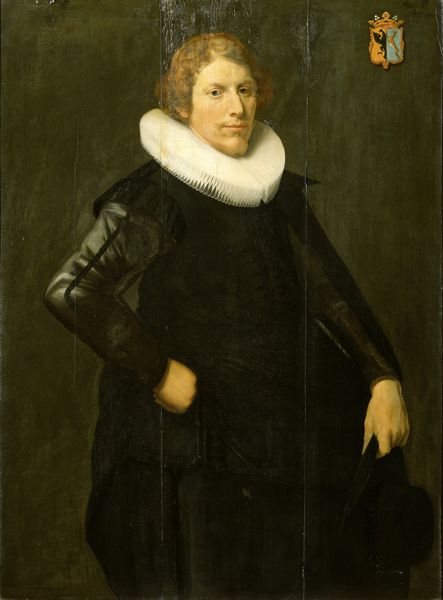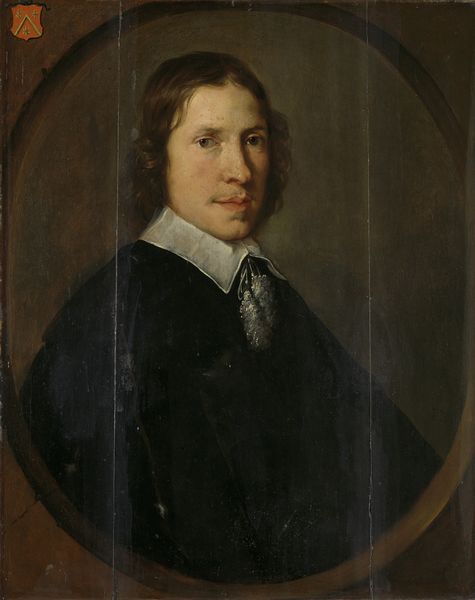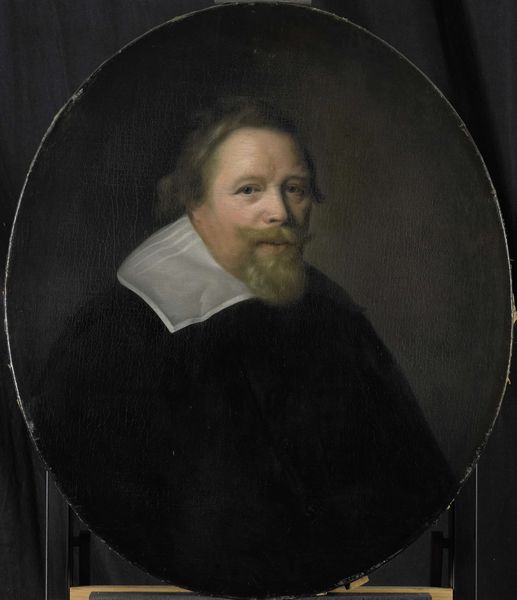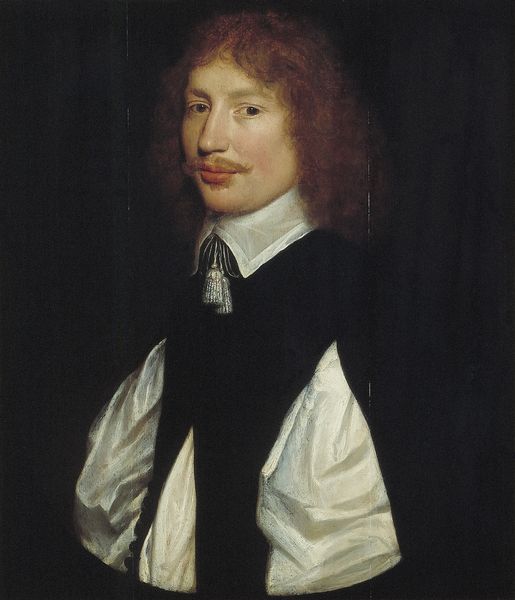
painting, oil-paint
#
portrait
#
baroque
#
painting
#
oil-paint
#
history-painting
#
realism
Dimensions: height 72.5 cm, width 61 cm, depth 5.7 cm
Copyright: Rijks Museum: Open Domain
Editor: So, here we have "Portrait of a Man," dating back to 1655, made with oil paint. What immediately strikes me is how intensely realistic it is, almost confrontational. How would you unpack this portrait, looking at it from your perspective? Curator: Let's start with the materials. Oil paint, by the mid-17th century, was the dominant medium. Think about its properties: the slow drying time allowing for blending, the luminosity. Consider the expense and the access. Who could afford such a commission, and who had the training to manipulate these pigments? This isn't just about aesthetics, it is also about economy. Editor: That makes a lot of sense. So, the subject's attire – the velvet cloak, the lace collar – those also speak to wealth and social standing? Curator: Precisely. These fabrics weren't readily available or easily produced. Each thread, each stitch, signifies labour, trade routes, and the social hierarchies of the time. Who made that lace? Where did the dye for that velvet come from? Editor: So, you are not just looking at the subject of the painting, but the world that made both the painting and the person in it possible. Is that fair? Curator: Absolutely. And think about the sitter's expression, the lack of idealization. He isn’t presented as a divine figure but as an individual embedded in his own particular context. The production and consumption of portraiture are entwined with this emerging sense of the individual in 17th-century Europe. Editor: That really gives me a new way of considering what a portrait can communicate, not just about the individual but about the system around him. Thanks! Curator: My pleasure. Remember, art always tells a story, even through the subtlest materials and textures.
Comments
No comments
Be the first to comment and join the conversation on the ultimate creative platform.
